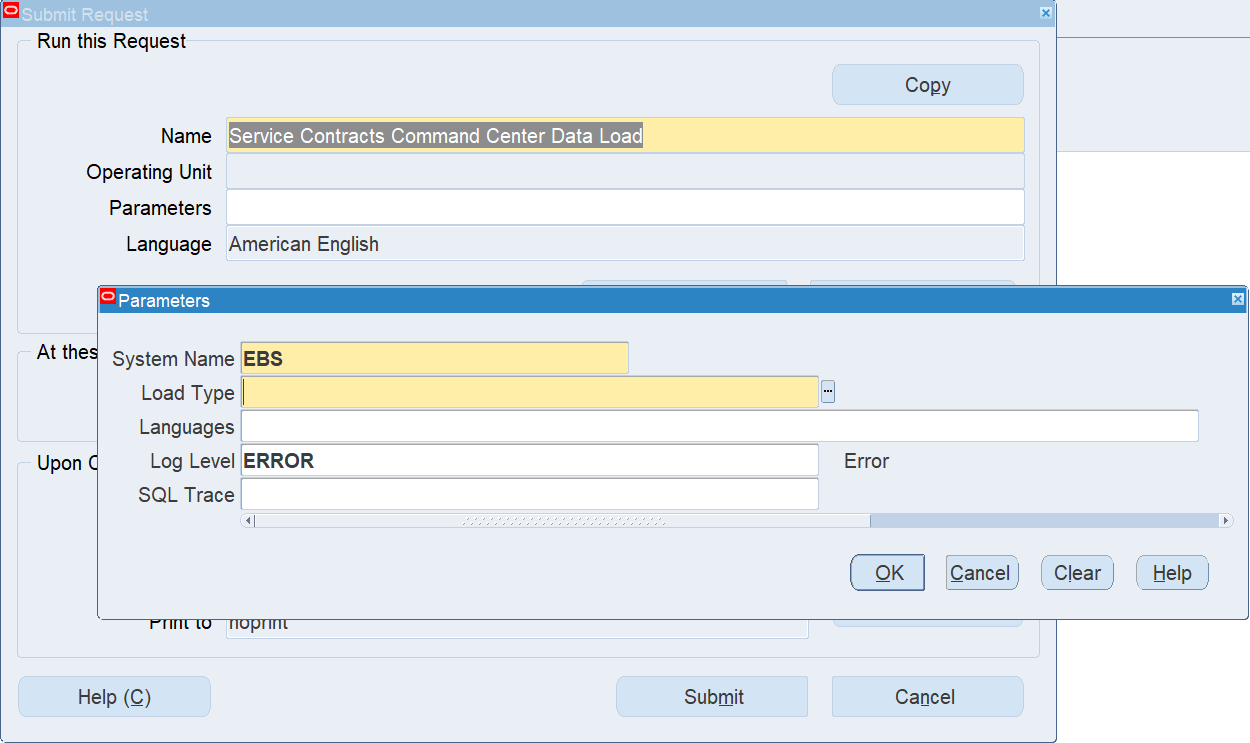Setting Up Oracle Service Contracts Command Center
This chapter covers the following topics:
- Setting Up Service Contracts Command Center
- Setup and Configuration Steps
- Configuring Descriptive Flexfields for Search
- Loading Service Contracts Command Center Data
- Profile Options for Service Contracts Command Center
Service Contracts Command Center Configuration
Setting Up Service Contracts Command Center
The Oracle Service Contracts application configuration and setup must be completed after the installation and common configurations are completed as described in My Oracle Support Knowledge Document 2495053.1, Installing Oracle Enterprise Command Center Framework, Release 12.2.
Note: To use Renewal Prediction, you must complete the setup as described in My Oracle Support Knowledge Document 2933050.1, Setting Up the Contract Renewal Prediction Feature and Additional Patches Required for Oracle Service Contracts ECC V10.
Setup and Configuration Steps
You must complete the following steps to set up Service Contracts Command Center:
Configuring Descriptive Flexfields for Search
Enterprise command centers support searching on descriptive flexfields (DFFs) attributes. After you configure DFFs you must run the data load process to make the DFF attributes available in the command center.
For additional information on configuring and customizing flexfields, see the Oracle E-Business Suite Flexfields Guide and My Oracle Support Knowledge Document 2495053.1, Installing Oracle Enterprise Command Center Framework, Release 12.2.
| Dashboard | Data Set | DFF Title | DFF Name | DFF Attribute Group Name |
|---|---|---|---|---|
| Service Contracts | oks-contract | Contract Headers | OKC_HEADERS_DESC_FLEX | Contract Headers |
| Service Contracts | oks-contract | Contract Lines | OKC_LINES_DESC_FLEX | Contract Lines |
Loading Service Contracts Command Center Data
To load data from Oracle E-Business Suite into Service Contracts Command Center, run the concurrent program Service Contracts Command Center Data Load from the Submit Request window.
(N): Requests > Run

To load data
-
In the Name field, select Service Contracts Renewal Command Center Data Load.
-
On the Parameters window that appears, select the appropriate Load Type.
-
Full Load: Loads all Service Contracts data from EBS and must be run for the first data load. If you select and run full load for subsequent requests, then this program clears all Service Contracts data from ECC and loads fresh data.
-
Incremental Load: Loads only the data modified since the previous load. Schedule incremental load to run as often as required to keep the ECC dashboard current.
-
-
In the Languages field, enter one or more language codes for the output. For multiple language codes, use the format AA,BB,NN. For example, enter US,AR,KO. If the field is blank, then the data will be loaded for the base language only (usually US).
-
Select the log level that you want the program to report. The default value is ERROR. Select DEBUG if you need to debug the program.
-
Select True to enable SQL trace. Otherwise, select False.
-
Submit the concurrent request.
-
Review your request using the Requests page.
-
Monitor data loading using the Data Load Tracking page of the ECC Developer responsibility.
Profile Options for Service Contracts Command Center
You must set the following profile option:
| Profile Option Name | Description |
|---|---|
| OKS: ECC Contract Extraction Reference Date | Set this profile at the site level to filter contracts to upload data to the Service Contracts Command Center based on this reference date.
Note: All contracts in Active status are uploaded to the Service Contracts Command Center, irrespective of the date set in the profile option. However, if the contract status is Expired, Hold, Signed, Entered Or Cancelled, then contracts with an end date greater than the date set at the profile option are uploaded to the Service Contracts Command Center. Additionally, if the contract status is Terminated, then contracts with a termination date greater than the date set in the profile option are uploaded to the Service Contracts Command Center. |